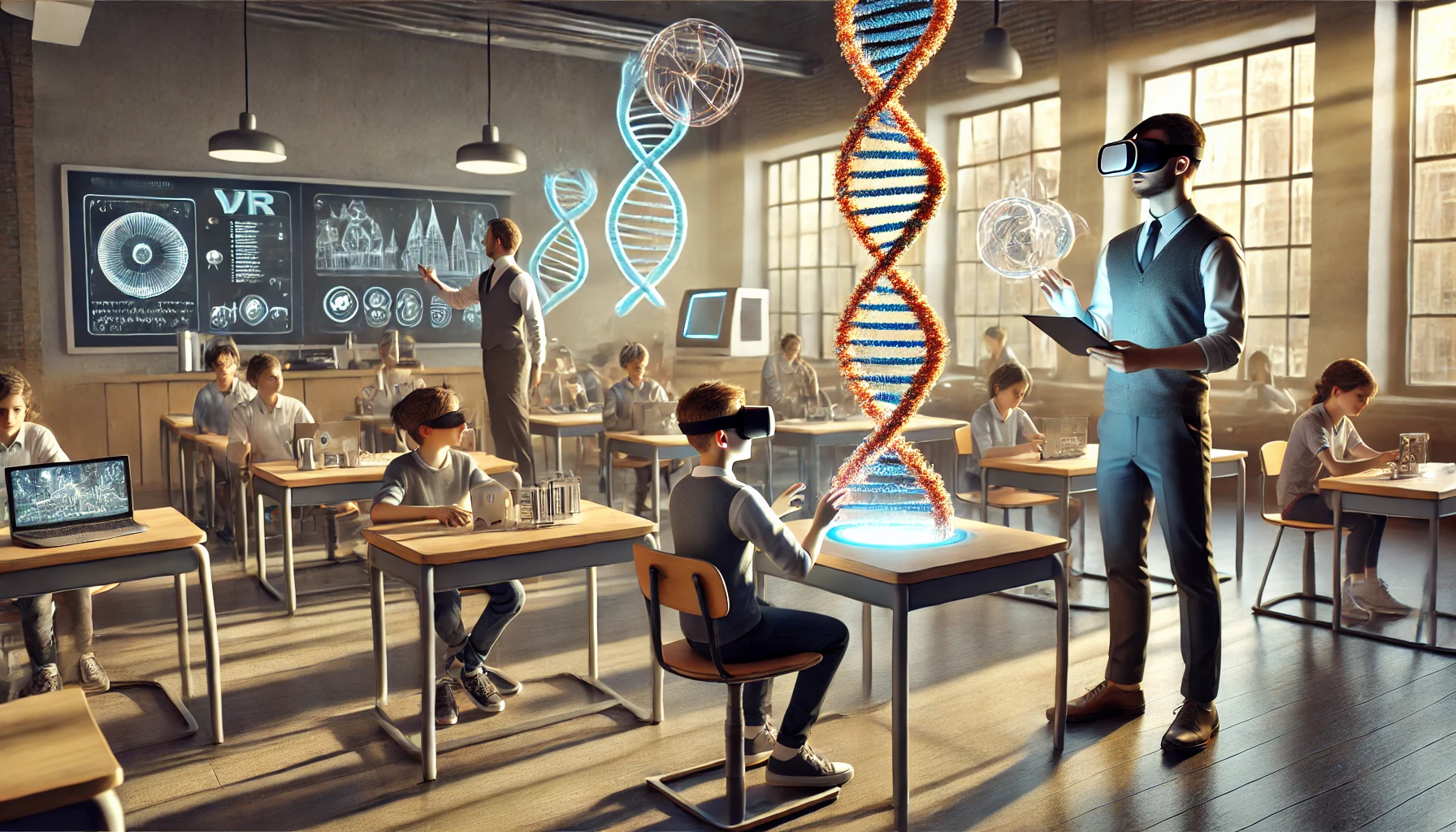DiYES International School – The integration of artificial intelligence (AI) in education is reshaping how students learn and engage in classrooms. With AI-powered tools, experiential learning has entered a new era where lessons are personalized, interactive, and more effective. AI-powered classrooms promise to revolutionize education by tailoring learning experiences to individual students, addressing their unique needs and strengths.
This article explores how AI is transforming experiential learning, the tools enabling this change, and the future of AI-powered classrooms.
The Role of AI in Experiential Learning
Experiential learning emphasizes hands-on experiences and real-world applications. It moves beyond rote memorization, focusing instead on problem-solving, critical thinking, and active engagement. AI enhances this approach by personalizing the learning process.
Through AI, educators can identify a student’s learning pace, preferred style, and areas needing improvement. AI algorithms analyze data from student interactions to deliver customized content, ensuring every child receives the support they need to thrive.
Tools Driving AI-Powered Classrooms
Adaptive Learning Platforms
Platforms like DreamBox and Khan Academy utilize AI to adapt lessons based on student performance. These tools provide real-time feedback, guiding students through concepts they find challenging while reinforcing their strengths.
For instance, a student struggling with fractions might receive additional practice problems, interactive videos, or simulations tailored to their skill level. This ensures progress at an individualized pace.
Virtual Reality (VR) and Augmented Reality (AR)
Intelligent Tutoring Systems
AI-powered tutoring systems, like Carnegie Learning’s MATHia, act as personal tutors. These systems monitor progress and adapt their teaching methods to suit each learner. They provide instant explanations, answer questions, and help students overcome hurdles in real-time.


READ MORE : Universitas Sumatera Utara Rayakan World Hindi Day: Pererat Hubungan Budaya Indonesia-India
Benefits of AI-Powered Classrooms
Personalized Learning Experiences
One of the most significant advantages of AI-powered classrooms is personalization. Every student learns differently, and AI ensures that their educational journey aligns with their unique needs. This approach reduces frustration, boosts confidence, and accelerates learning outcomes.
Enhanced Engagement
AI tools make learning interactive and exciting. By incorporating gamification, virtual simulations, and AI-driven storytelling, students remain motivated and eager to participate in class activities.
Data-Driven Insights for Teachers
Educators benefit from AI-generated analytics that highlight trends in student performance. These insights help teachers identify struggling learners, design targeted interventions, and measure the effectiveness of their teaching methods.
Inclusivity and Accessibility
AI makes education more inclusive by catering to diverse needs. For students with disabilities, AI-powered tools can provide assistive technologies like text-to-speech, voice recognition, or real-time translations, ensuring everyone has equal access to quality education.
Challenges and Ethical Considerations
While AI-powered classrooms offer immense potential, they also come with challenges. Privacy concerns arise as student data is collected and analyzed. Ensuring the security of this data is paramount to maintaining trust in AI systems.
Moreover, the digital divide remains a barrier. Schools in underprivileged areas may struggle to access the technology and infrastructure needed for AI implementation. Bridging this gap is essential for equitable education.
Ethical considerations also play a role, particularly when AI algorithms unintentionally reinforce biases. Developers must ensure these systems promote fairness and inclusivity in learning environments.
The Future of AI-Powered Education
The evolution of AI in classrooms is just beginning. Future advancements are likely to include even more sophisticated tools that blend AI with emerging technologies. From AI-powered peer learning platforms to advanced VR simulations, the possibilities are endless.
Additionally, as AI continues to integrate into education systems worldwide, educators will need ongoing training to maximize the potential of these tools. By fostering collaboration between technology developers and educators, the future of AI-powered classrooms can achieve both innovation and inclusivity.
How Schools Can Get Started
- Invest in Training: Educators should receive comprehensive training on AI-powered tools to maximize their potential in the classroom.
- Choose Scalable Solutions: Schools should select platforms that can grow with their needs and integrate seamlessly into existing systems.
- Focus on Equity: Ensuring access to AI tools for all students, regardless of socioeconomic background, should be a priority.
- Evaluate Continuously: Regularly assess the effectiveness of AI-powered solutions and adapt strategies as needed.
AI-powered classrooms represent a transformative shift in education, offering personalized learning experiences and enhanced engagement for students. By leveraging tools like adaptive learning platforms, VR technologies, and intelligent tutoring systems, schools can foster a new generation of confident and capable learners.
While challenges like privacy and access must be addressed, the potential of AI in experiential learning far outweighs its drawbacks. With thoughtful implementation and collaboration, AI has the power to revolutionize education for the next generation.
